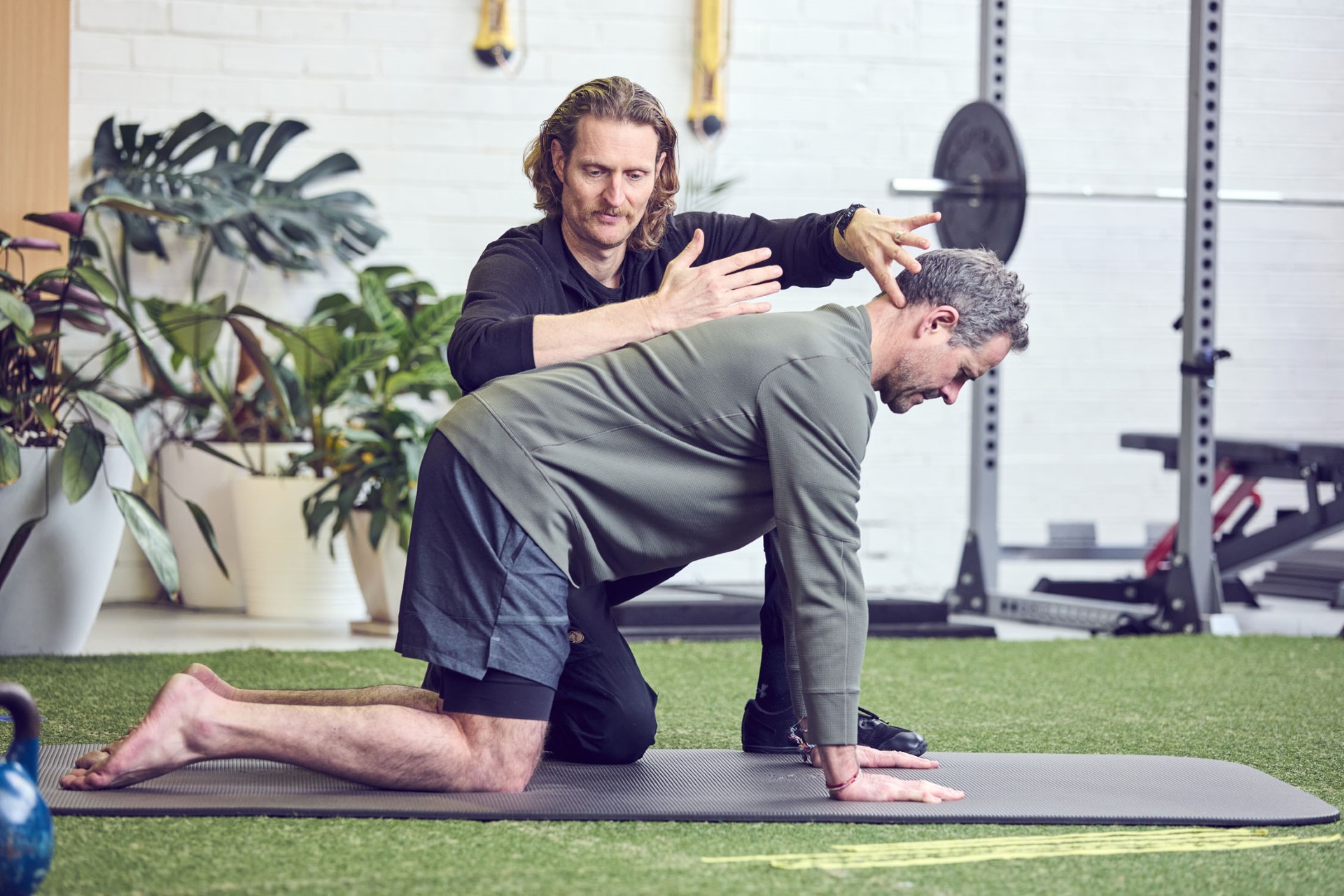Dynamic Neuromuscular Stabilisation (officially spelt in the American style as Stabilization), is a framework applied to exercise and rehabilitation that was developed at The Prague School of Rehabilitation.
In the DNS framework, human movement is viewed first and foremost through the lens of motor control, i.e. how the nervous system “organises” movement patterns. There is a particular focus on how motor patterns naturally emerge in humans from birth and how these in-build patterns guide and influence the function and the structure of our body throughout the lifespan.
A key strength of the DNS framework is that it addresses the body as a whole system right from the outset. It considers the local area of the body experiencing pain and/or dysfunction within the context of the global function and structure of body. This contextual approach is particularly effective where injury, pain or dysfunction is chronic and complex.
DNS places a high importance on breathing mechanics and the function of the Diaphragm. The reason for this is that, in addition to its role as the primary muscle of respiration (breathing), the Diaphragm is also a central player in stabilising the spine and trunk. In other words, good diaphragmatic function is essential for “core” stability. Far from the rigid “suck in your belly button and brace your abs” approach, DNS describes spinal stabilisation as a dynamic process, constantly regulated through the interplay of the Diaphragm, pelvic floor and other muscles and connective tissues of the trunk.
The function of this dynamic, integrated spinal stabilisation system can be compromised for a variety of reasons. Working on developing better coordination of this system can often yield significant improvements in function and reduced levels of stiffness and pain.
A detailed assessment of breathing mechanics and spinal stabilisation is included in both the comprehensive and standard assessment protocols.
A more in-depth review of the integrated spinal stabilisation system is available on the blog page.


